Street Mussels: Istanbul’s Midye Tava
I have two main sources of knowledge when it comes to the street foods available in that intercontinental crossroads city, Istanbul. The first is family: Katy, Mindy’s cousin, and her husband Daniel, our dear friends, left the rat race behind a couple of years ago to go “vagabonding” (as they put it) around the world. Of course COVID-19 put the kibosh on that admirable pursuit for a time, but not before they were able to spend a few weeks exploring Istanbul and putting at least a dent in the vast and diverse assortment of street foods on offer at the city’s carts, stalls, windows, and shops.
I searched Daniel’s travel blog, which is more food-focused than Katy’s hiking blog (though both are good reading), for Midye Tava, a snack of fried-mussels-on-a-stick widely available in Istanbul. Though it is offered by many of the same vendors selling, for instance, Kokoreç, which Daniel does document in a fairly epic rundown of Istanbul’s street eats, I did not find mention of Midye Tava. I searched instead for mussels, and found mention of a stand selling Midye Dolma, a type of stuffed mussel filled with an herbed rice mixture. But no fried mussels. Google searches also seem to more readily return midye dolma than midye tava.
However, my other source of knowledge on Turkish food is of course my colleague Deniz, as mentioned in my recent post on Islak Hamburgers, who grew up in Istanbul and still visits her family there regularly. It was in fact Deniz who first mentioned Midye Tava to me, and who inspired its addition our List when she cited it as her favorite sandwich in Istanbul. Midye Tava on its own consists of cleaned mussels, threaded onto skewers, battered, deep-fried, and served with a sauce called “tarator” sauce (tartar sauce? No, tarator. Read on). Thus it is most commonly served simply as a skewer of fried shellfish. However at some stands it can also be ordered as a sandwich served in a long thin bread roll, similar to a hot dog or bratwurst bun.
Deep-fried, on a stick, and wrapped in bread? That, my friends, is the street food trifecta. A treat combining all three of those features is worth exploring.
But where to get the mussels? And when? I am not a seafood aficionado–I’ve often lamented that it’s a real blind spot of mine. However, I’m enough of a crossword puzzle buff to know that I should not be eating shellfish in months that are “RLESS” like August. Though it is often my MO when cooking unusual (to me) ingredients, in this August heat I did not relish the thought of a multi-hour trek all over the Chicago area only to end up bringing home a product that was somehow wrong or inferior. A Google search made Wabash Seafood on West Hubbard seem like a solid prospect, but on a Saturday morning visit I was informed that they did not do retail business at all anymore, only wholesale with major accounts.
However, the manager I spoke to did direct me to Dirk’s on Clybourn.
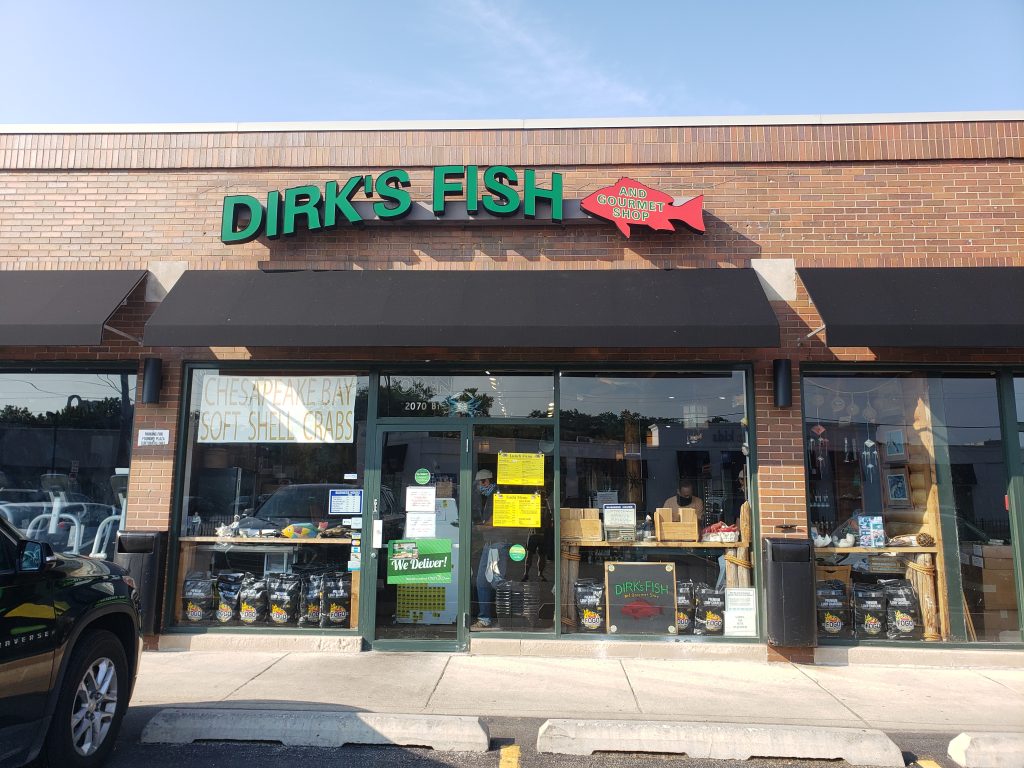
Dirk’s is in a fairly nondescript strip mall between two slightly busier sections of the Clybourn corridor of Chicago’s near northwest side, and since it opened an hour later than Wabash, I had a bit of time to kill in the parking lot. By the time 9am approached, there were a half-dozen other people also waiting on them to unlock that door. Dirk’s staff was seasoned and knowledgeable though, and it didn’t take them long to get us all on our way. I left not only with a few dozen sustainably-farmed mussels for this project, but some additional snacks to share. You never know when you’ll need the goodwill a little surprise ceviche will afford you.

Shucking mussels turns out to be a bit of an ordeal. I watched a Youtube video and the guy made it look easy enough. And, by the end, I did get better at it. I wouldn’t say I ever got good at it though. I bought special gloves to help protect my hands from accidental self-stabbings–and trust me, I definitely would have stabbed myself otherwise.

The gloves did not, however, magically make me able to extract mussels intact from their shells.
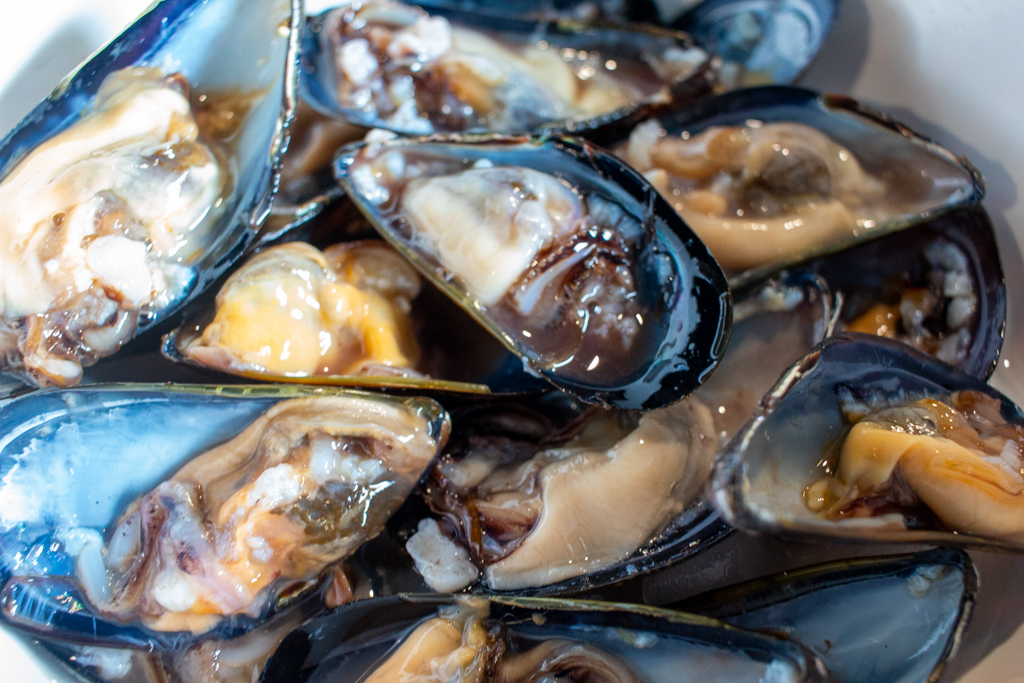
In any case, due to my shucking ineptitude, once they were shucked, cleaned, and dredged in flour, my mussels were mangled, misshapen things, dangling limply from their skewers.
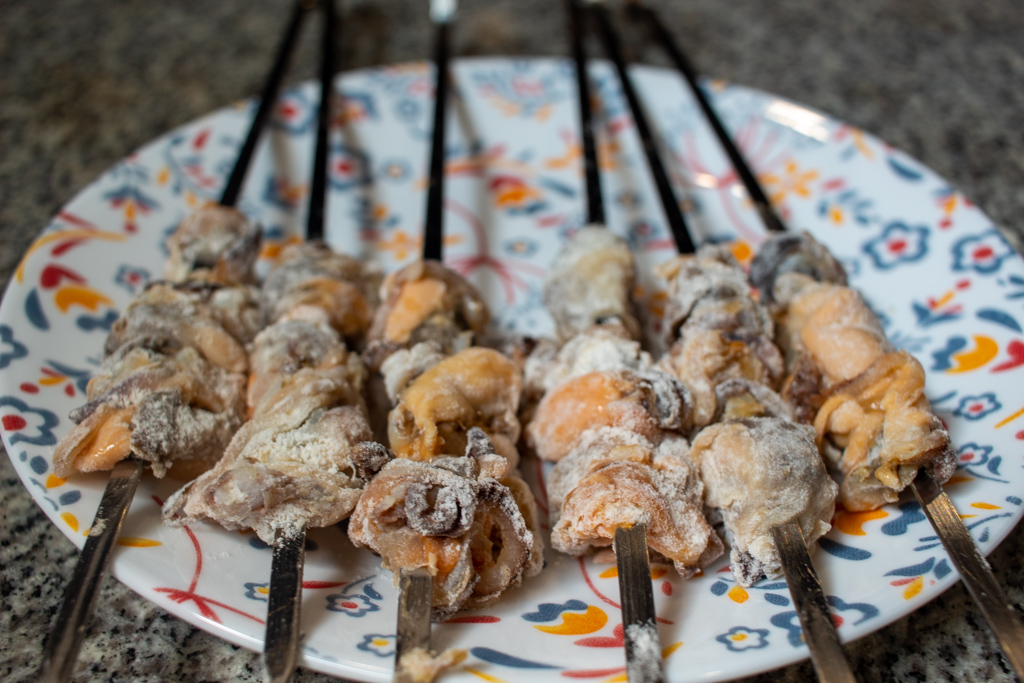
Shorter bamboo skewers would work better here but my long metal kebab-grilling skewers were what I had and what I used.
The recipe I used for the Midye Tava, vetted and approved by Deniz (and more importantly by Deniz’s mom), from prodigious recipe trove The Spruce Eats, uses an interesting technique for the batter, mixing flour, salt, club soda, and egg yolk, and then dipping the battered mussels into a mixture of water and baking soda just before frying. My assumption is that the carbonated batter liquid gives the batter volume, while the dip in water and baking soda is intended to help make the batter’s surface crisper. I’m not 100% on the food science behind this though, anybody out there have thoughts?
The batter did seem to inflate in the oil, and the resulting fried mussels certainly had their share of crispy bits.
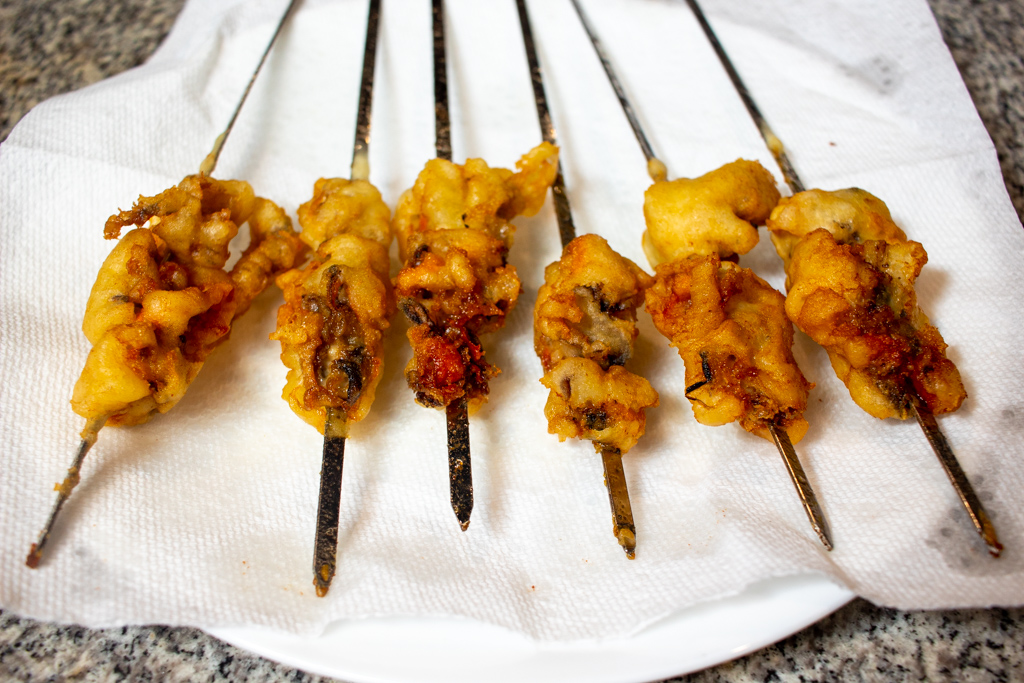
Per the Spruce Eats recipe, to assemble the sandwich, you start by “spread(ing) some tarator sauce between the crusts of a hunk of Turkish bread.” Deniz, however, said that versions using traditional Turkish bread are “not how it is normally served. That is the bread used for kokoreç and you get this Midya Tava sandwich at kokoreç stands, so I can imagine some places use the same bread.” However, she says the sandwich version of Midye Tava is served in something “kind of like a toasted hotdog bun.”
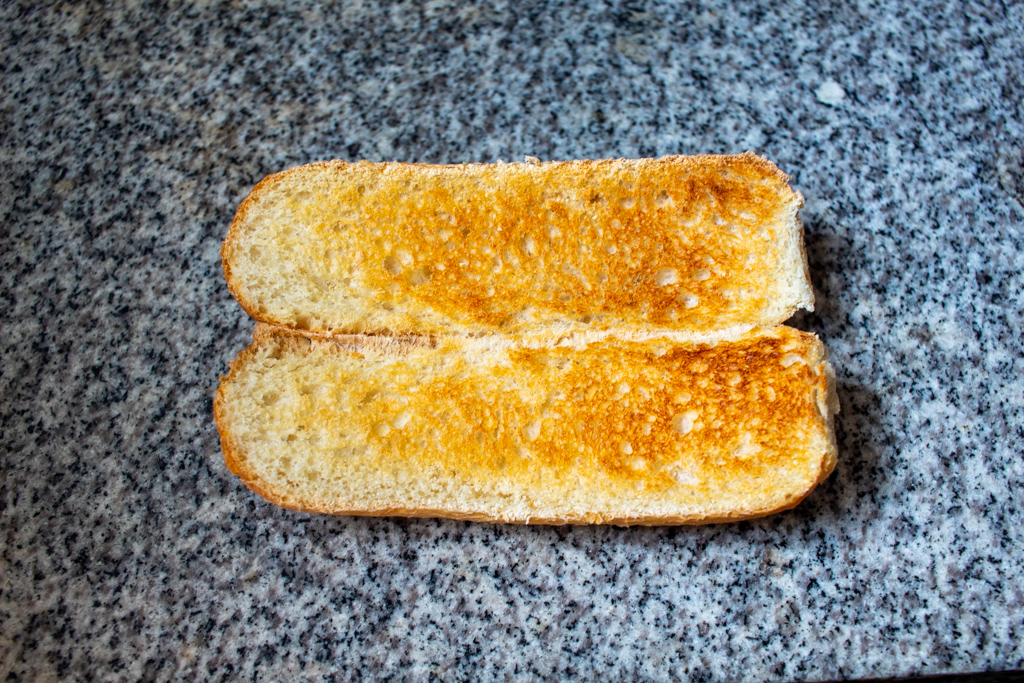
This is a toasted bratwurst bun–close enough. So, we start by spreading tarator sauce in the bread
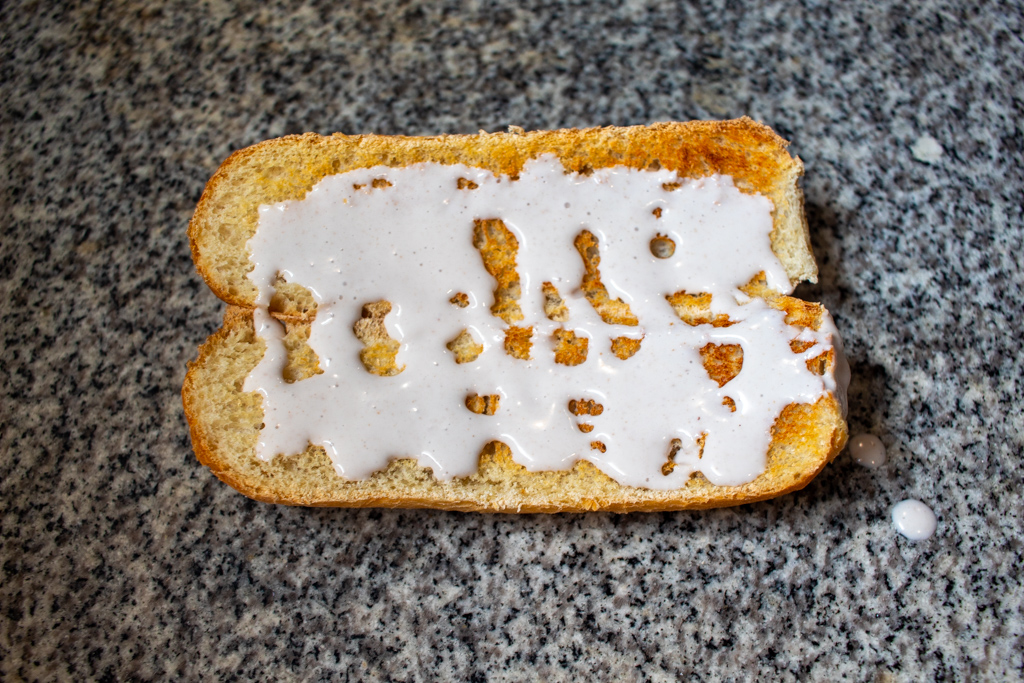
But what is this tarator sauce? And… well it doesn’t look very spreadable there does it? The versions I’ve seen photos of do seem thicker. According to this Spruce Eats recipe, the sauce consists of yogurt, walnuts, garlic, lemon juice, and salt, with some crustless white bread to help stabilize and thicken it. At the time I made this sandwich, it had not thickened very much. The next day, it was thicker, but I think my main problem was in using a poor quality of yogurt.
Regardless, despite the name of the sauce being “tarator,” which I imagine to be pronounced very much like the “tartar” in tartar sauce–a common Western condiment for fried seafood–this sauce did not taste very much like tartar sauce at all. There’s a slightly bitter, nutty walnut flavor with a bit of garlic’s pungency suspended in a creamy yogurt base with some lemony tartness. I like it, but I’m not sure what else I could use it for.
After spreading this sauce in our crusty bread roll, our recipe’s sandwich assembly instructions continue like so–“use the bread to hold the mussels and slide them off the skewer.”



Voila! Fried mussel sandwich, Istanbul-style.
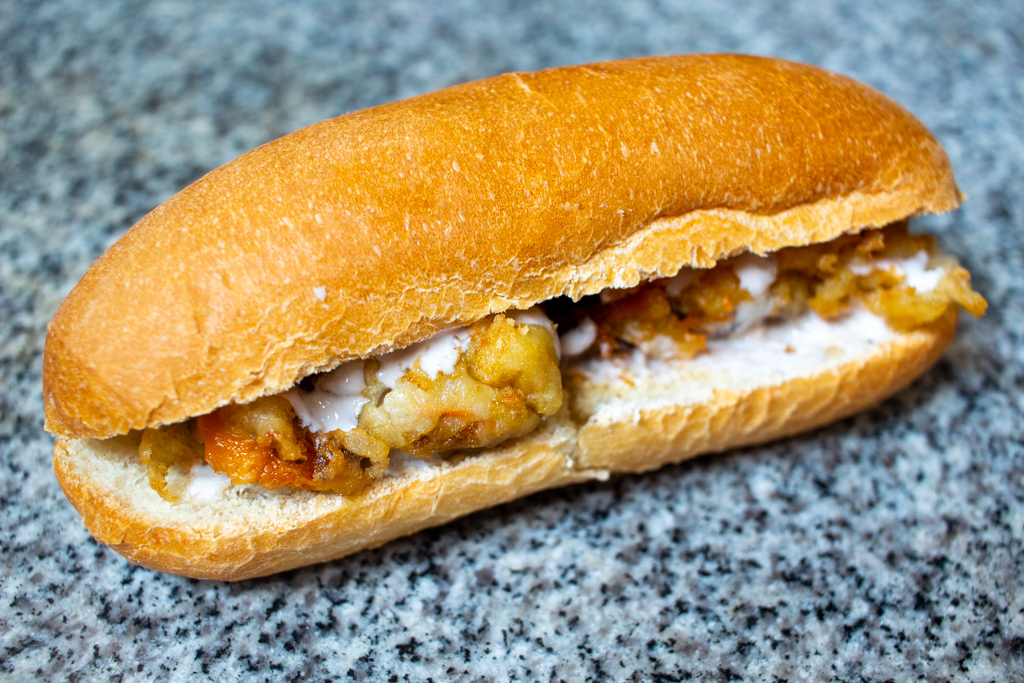
I also tried making this sandwich on a better quality of bread, a crusty, sesame-studded demibaguette from Damato’s Bakery on Grand, some of the best bread for sandwiches in the city of Chicago.
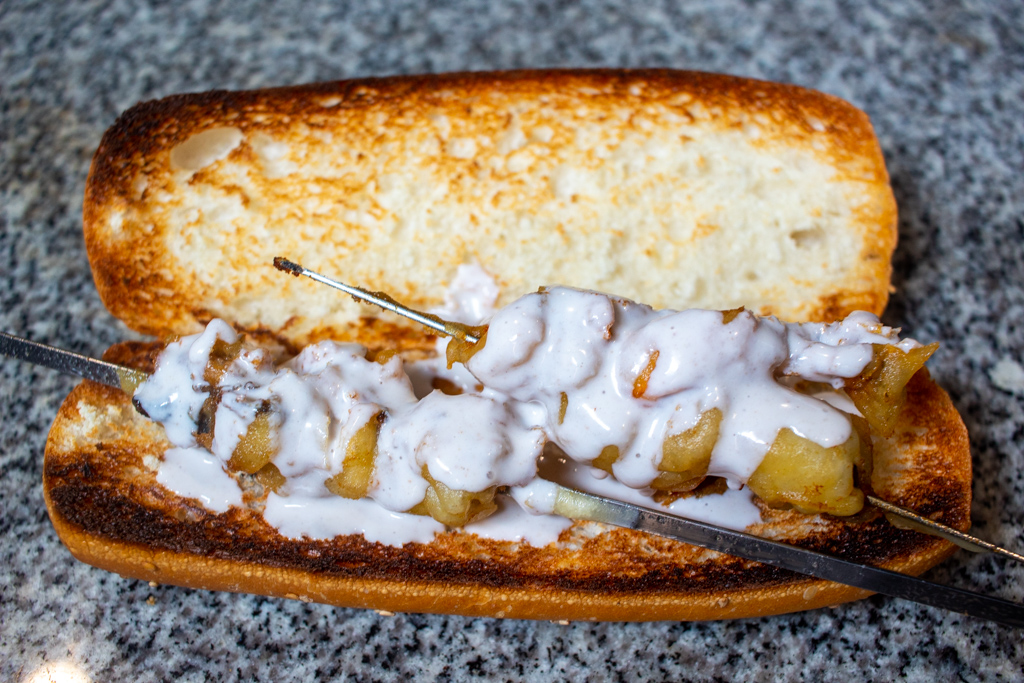
The bread was remarkable. The sandwich was less so. By using a simpler bread, Turkish vendors make the sandwich all about the interplay between the sweet, juicy fried mussels and the pungent, creamy tarator sauce. When putting the same ingredients into a better class of bread, the sandwich becomes more about the bread than what’s in it.
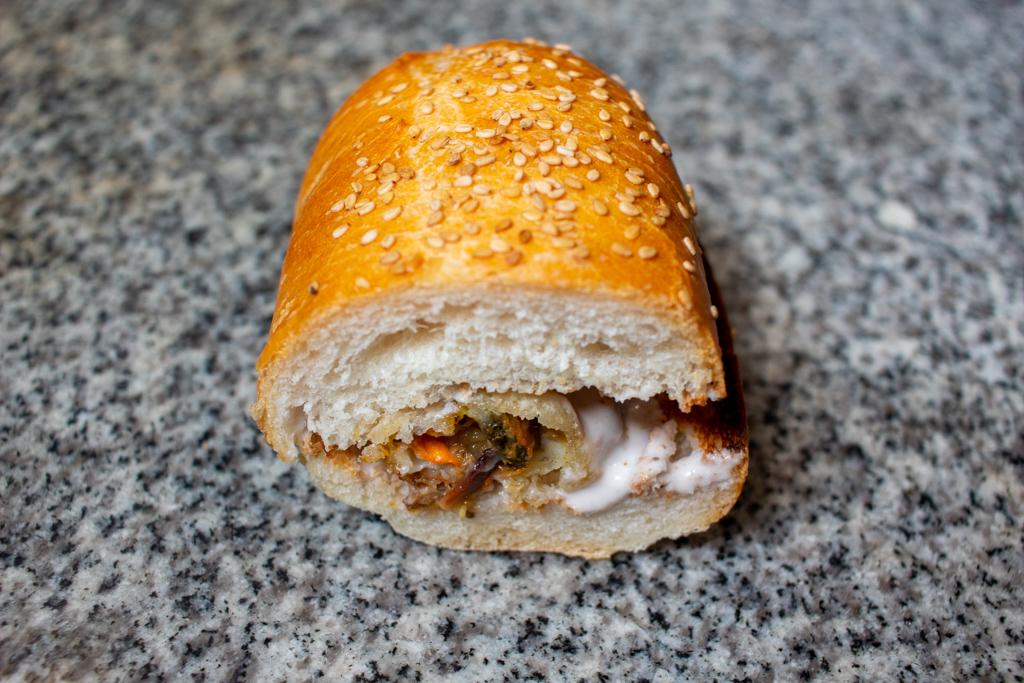
Don’t get me wrong–I devoured it. But the best version of the sandwich that I made came when I realized that I shouldn’t even be toasting the bread, or at least not the cut sides of the bread. Instead, I crisped up the crust of another ordinary bratwurst roll in a hot oven, then simply cut it open
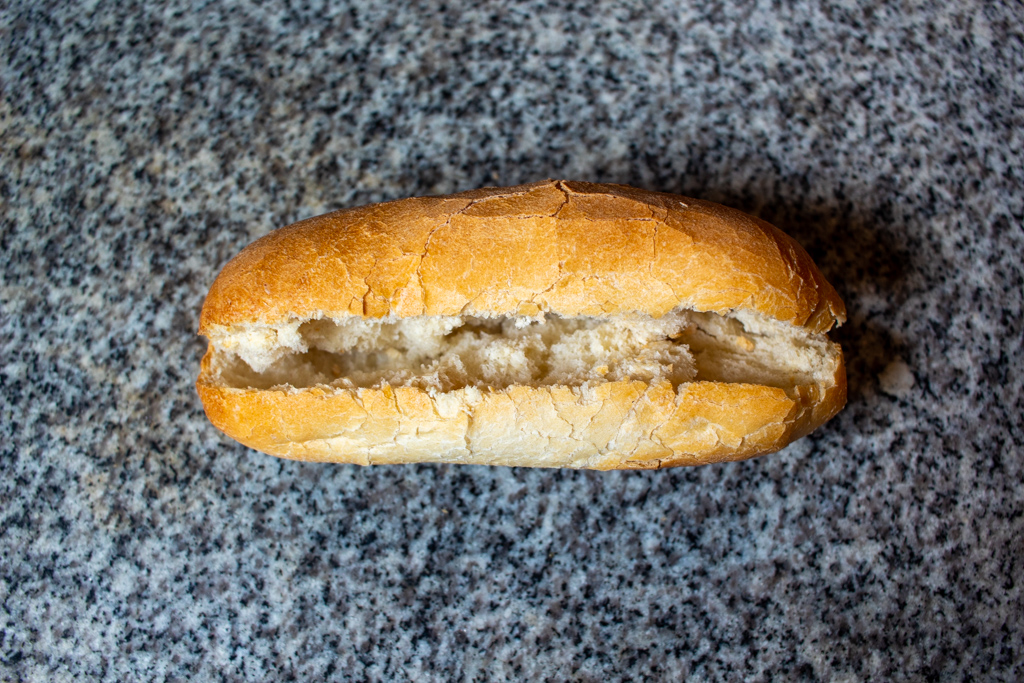
Stuffed in the mussels
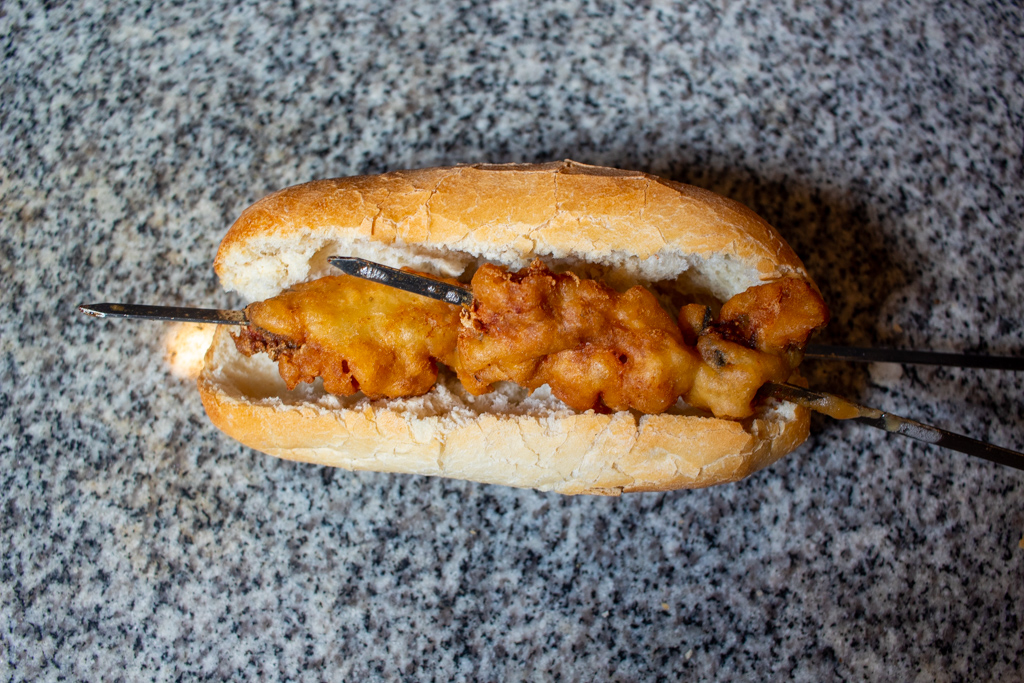
And then laid on the sauce, somewhat thickened from an additional day in the fridge.
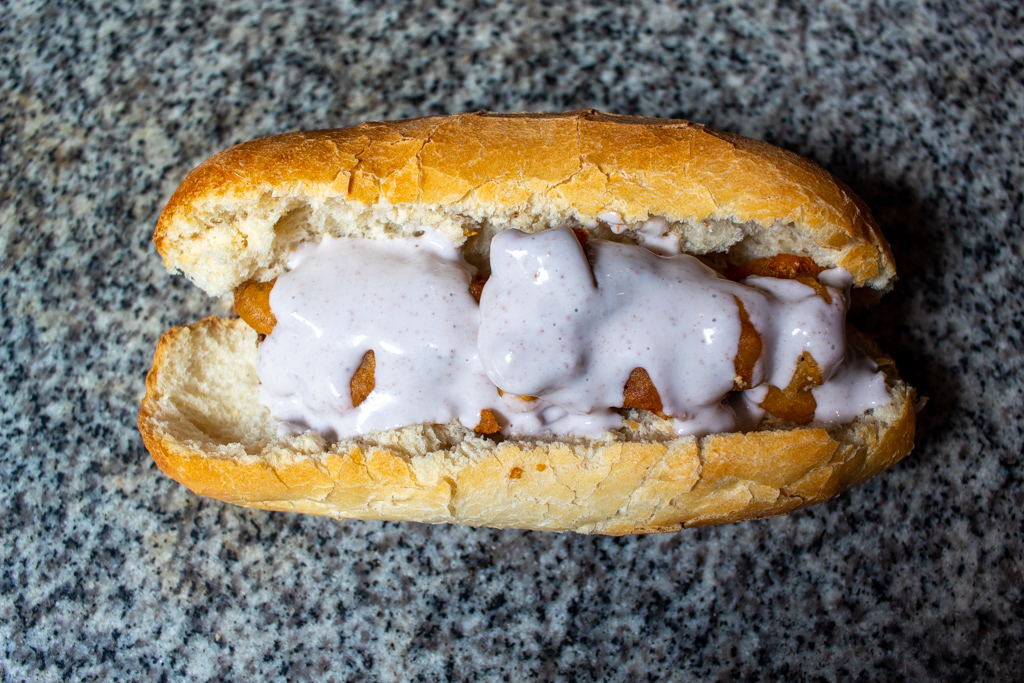
It’s a simple sandwich–two ingredients stuffed into bread. Like I often say, a great sandwich starts not with great bread, but with the right bread, and it seems that a simpler bread helps let these two ingredients shine, where a better bread would muddy the waters. Would I like to see something else in there–remoulade, maybe, tomato and lettuce, even pickles? That would be a good sandwich, and would probably stand up to better bread. But it would be a po’boy, not a midye tava sandwich.
And with the simplicity of the midye tava as thoroughly explored as I’d likely be able to do outside of a trip to Istanbul, I only had one question left this month. What was I going to do with all these mussels?
That question was answered by the numerous Google queries I’d already made: midye dolma, or Turkish-style stuffed mussels.
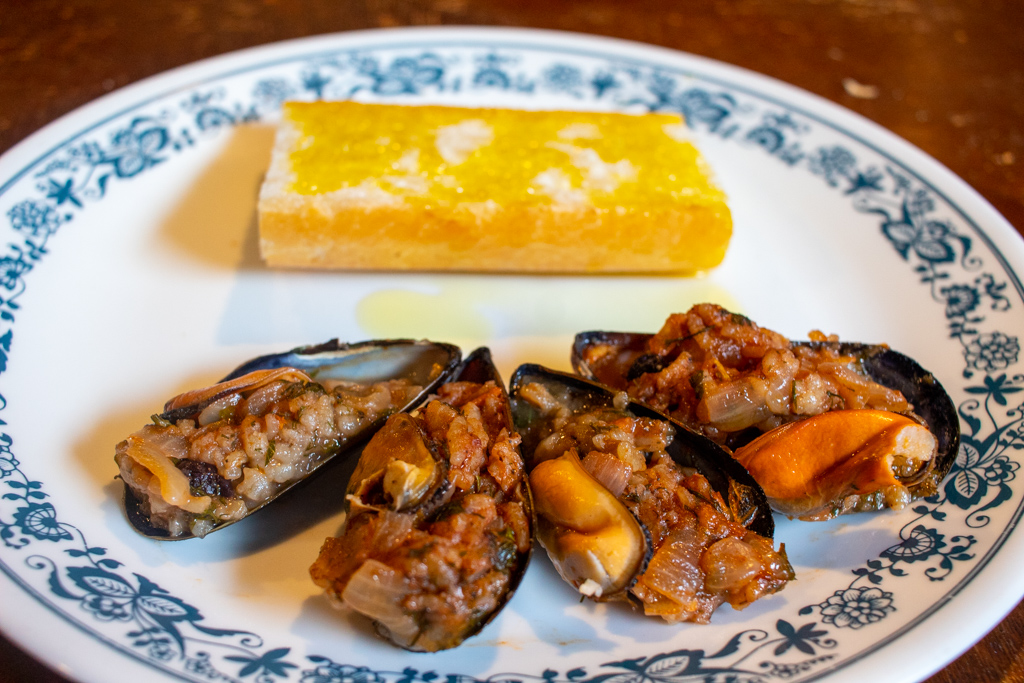
The midye dolma recipe calls for opening the mussels, removing the beard–a small fibrous tether the mussel uses to attach itself to a nearby surface–and any grit, then filling the shell with an herbed rice and pine nuts mixture. These are then steamed in a pan to cook the mussel, cooled, and served cold or at room temperature.

The recipe I chose called for dried currants, which I did not have. I used dried blueberries instead. Why? Because I like blueberries. The sweetness of the fruit helped accentuate the sweetness of the mussels and pine nuts, and complemented the dill and parsley better than I’d hoped.
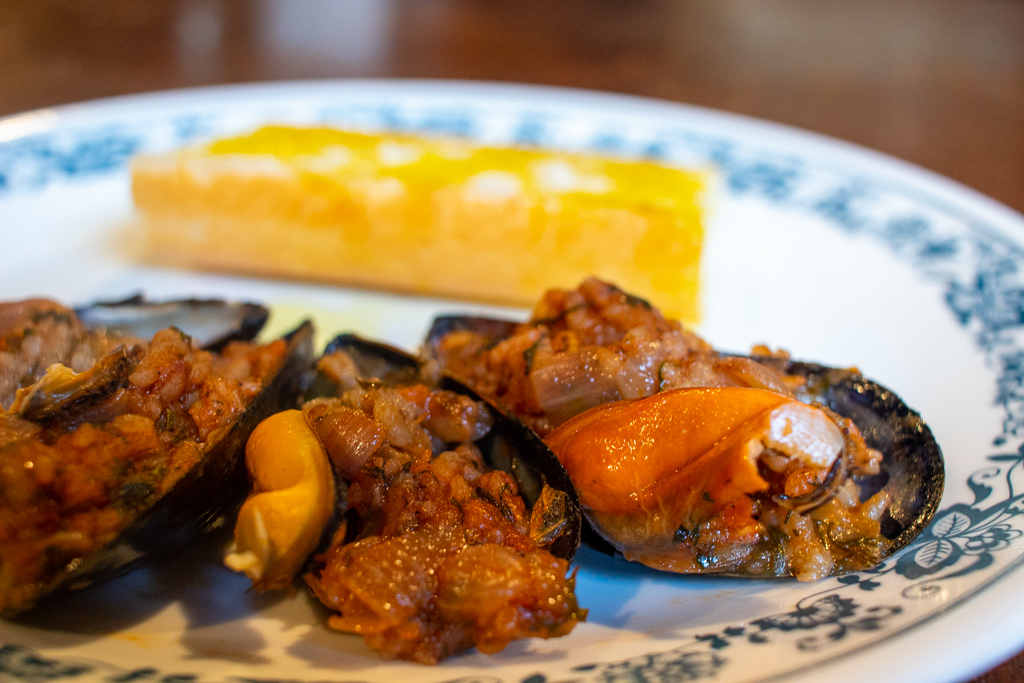
I ate my stuffed mussels with a simple accompaniment of crusty bread and olive oil. Mindy wisely chose a salad as her side dish. At any rate, too many mussels was thankfully no longer a problem.

I DIDN’T MAKE THEM FOR YOU!

I like sandwiches.
I like a lot of other things too but sandwiches are pretty great


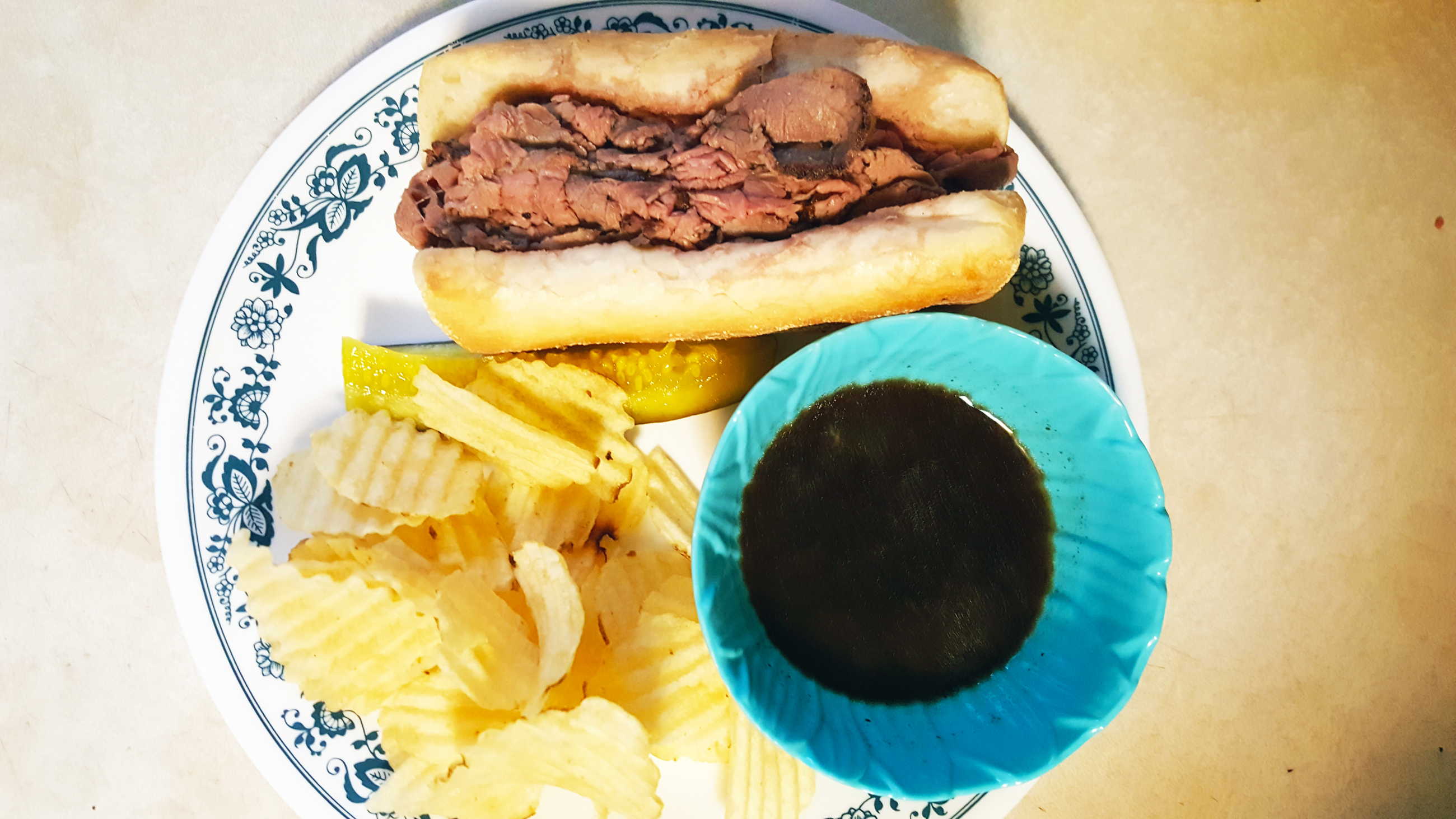

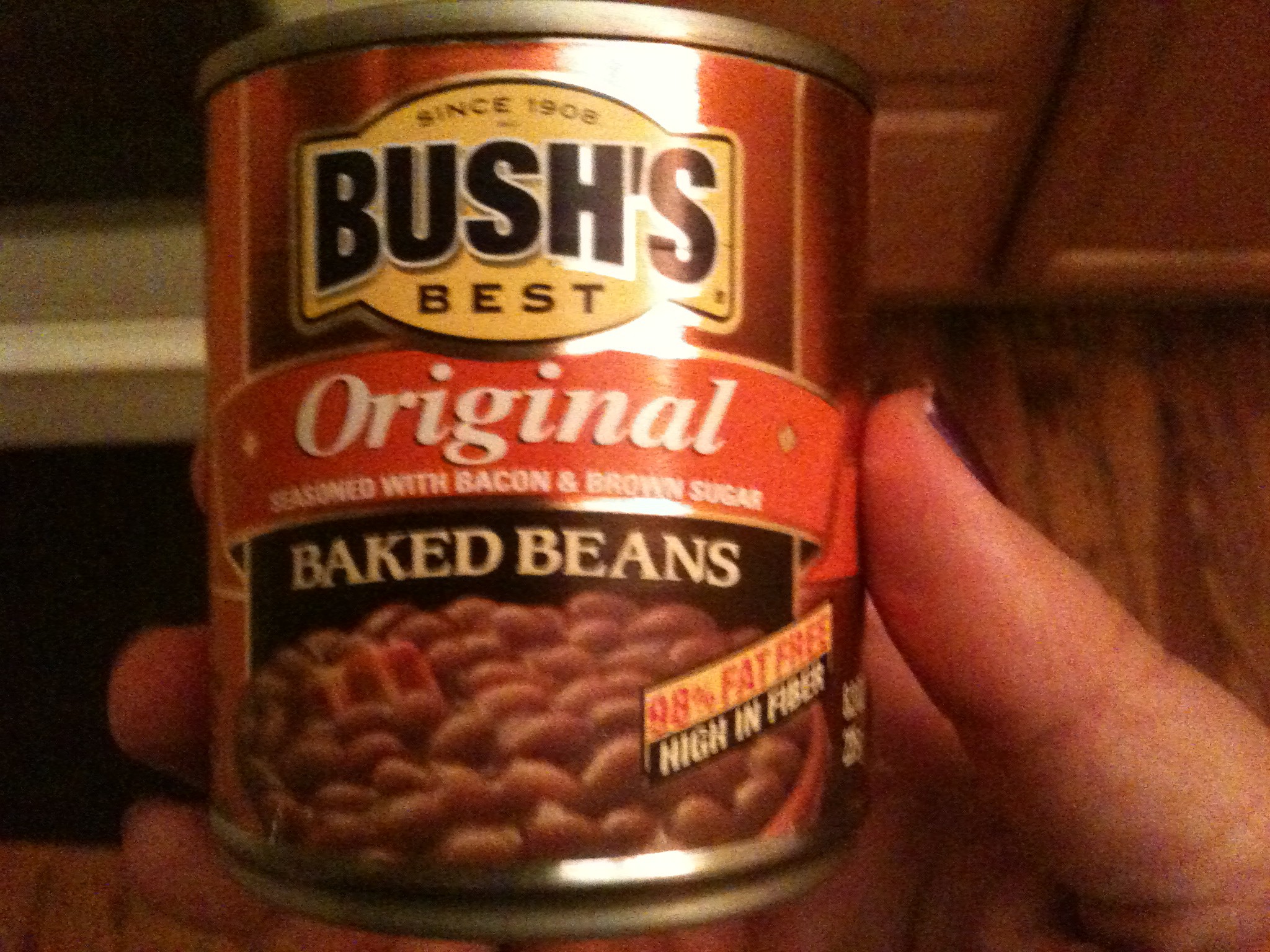






Recent Comments